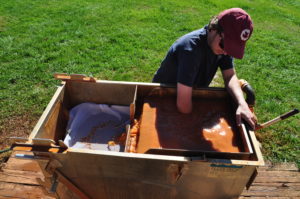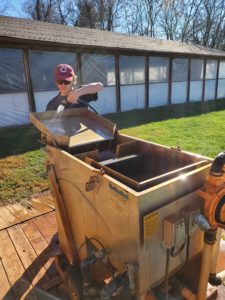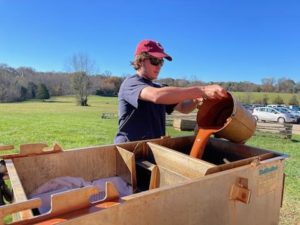Archaeology Blog
Sink or Swim, Soil Edition
When digging, archaeologists use mesh screens that allow them to recover artifacts that are ¼-inch in diameter or larger. But what about objects that are extremely small, that fall through the screens used in the field? Archaeologists invented a technique called soil flotation to account for this potential loss of information by recovering these special types of artifacts, including plant and animal remains.
Flotation starts by strategically sampling soil from excavation sites. Once the sample is dry, it is then ready to be floated. Each sample is processed in a tank of agitated water. This agitation causes the soil to be separated from the artifacts, stones, and organic materials contained in the sample. Less dense material that floats to the surface is called the light fraction. More dense material that sinks (i.e. artifacts) is collected separately as the heavy fraction.
Light fractions mostly consist of plant remains. Once collected, they might be sent to specialists such as an archaeobotantist who can identify and analyze historic plant matter. Light fractions can give archaeologists great insight into what the environment around a historic site was like and what people may have been eating.
Heavy fractions give an archaeologist an idea of any artifacts that might have been missed during excavation with the ¼-inch screens. Here at Poplar Forest, they often contain brick fragments, charcoal, and other small artifacts such as beads, brass straight pins, and animal bones.


